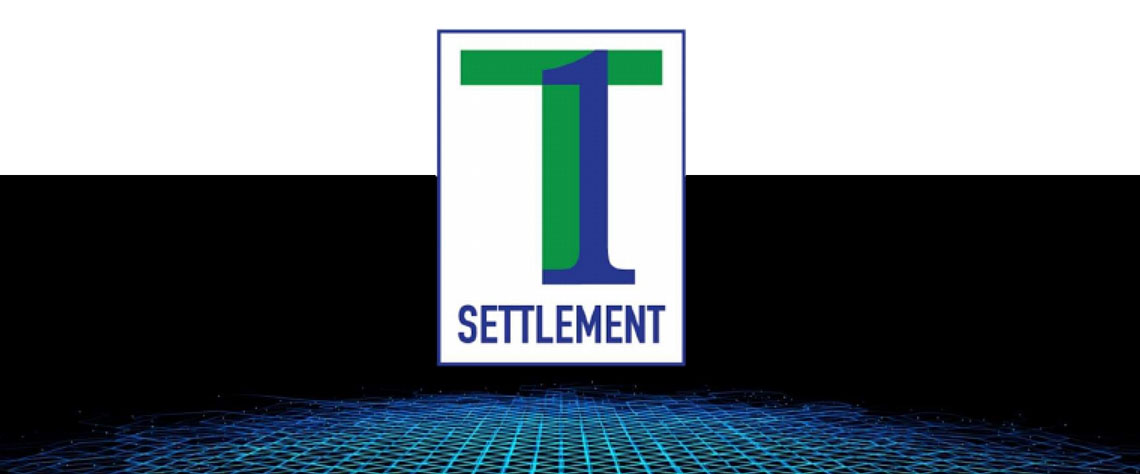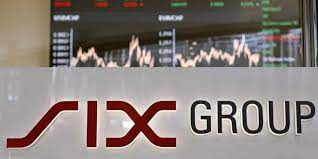DTCC, ICI and SIFMA publish T+1 Playbook
The Depository Trust & Clearing Corporation (DTCC) has collaborated with two industry associations, The Securities Industry and Financial Markets Association (SIFMA) and the Investment Company Institute (ICI), to publish a T+1 Implementation Playbook that will guide the transition to next-day securities settlement in the US.
According to the joint authors, this Playbook has been created to assist market participants in preparing for the many complex steps involved in this move to accelerated settlement. Subject to final regulatory approval, this document assumes a likely transition date to a T+1 settlement cycle during Q3 2024. However, the authors will update the transition schedule, should the financial authorities decide on a different live date for T+1 enactment.Deloitte and Touche LLP were employed by SIFMA and ICI to help with the drafting of this volume.

The Playbook has 14 sections, eight of which provide recommendations applicable to T+1 transition across different parts of the trade lifecycle, including trade processing, asset servicing, securities lending, prime brokerage, funding and liquidity management and associated documentation requirements.
Other chapters in the Playbook examine issues relating to regulatory changes, buy-side considerations, industry testing and migration strategy, the global impact of T+1 transition and primary offerings. Two sections also seek to extract lessons that the industry has learnt in managing the transition from T+3 to T+2 settlement in 2017.
Reflecting on the publication, SIFMA president and CEO Kenneth Bentsen says: “As part of ongoing efforts to decrease risk in the system, SIFMA, ICI and DTCC started discussions in 2020 and formally initiated the effort to accelerate the settlement cycle to T+1 in early 2021.
“This February, we welcomed the US Securities and Exchange Commission’s (SEC’s) leadership in supporting the acceleration of the settlement cycle to T+1 via its proposal, which provides regulatory certainty to market participants. Today [we offer] all impacted market participants a guide to follow as they develop their implementation plan for moving to T+1 settlement in 2024.” DTCC’s outgoing president and CEO Michael Bodson says: “The Playbook provides a robust strategy and plan for market participants to follow to prepare for the move to T+1.
“[This] reflects the experiences and lessons learned during the seamless transition from T+3 to T+2 and we are confident it provides a clear and defined roadmap to further accelerate the settlement cycle in the most efficient manner possible while mitigating risk.”
ICI president and CEO Eric J Pan adds: “Moving to T+1 will provide increased efficiencies for both investors and market participants and reduce settlement risk. The Playbook released today will be a helpful roadmap for our industry, building on the success of the move to T+2.” With Michael Bodson's retirement, Frank La Salla will take over as president and CEO of DTCC from later this month.
European Parliament implements new sustainability requirements under MiFID II
The European Parliament and the Council of the European Union have implemented new ESG suitability requirements as part of the second Markets in Financial Instrument Directive (MiFID II). The key market development will see the integration of new sustainability factors for investment firms that follow MiFID II compliance.

Commenting on the development, Janine Hofer-Wittwer, senior product manager, financial information at SIX, says: “For market participants, the goal is to work with data providers able to source and distil the data and provide it in a way that is easy to implement, minimising the lift needed for the latest and future ESG regulatory requirements." The new assessment of suitability is one of the most important protections for investors under MiFID II, according to the European Securities and Markets Authority (ESMA).
The assessment applies to the provision of all types of investment advice (whether independent or not) as well as portfolio management. The original Directive, which officially entered into force on 3 January 2018, is designed to strengthen investor protection and improve the functioning of financial markets.
In August 2021, the European Commission published a delegated regulation which outlined that investment firms should also identify the client’s sustainability preferences. On 27 January 2022, ESMA opened a consultation on the draft guidelines which address the inclusion of sustainability preferences in a client’s suitability assessment from a practical perspective.
Commenting on the implementation of ESG sustainability requirements, Volker Lainer, regulatory expert at GoldenSource, says: “After only just waking up to the ESG MiFID II suitability regulatory update, many firms on the buy and sell-side are going live with a tactical data solution.
“This will be sufficient for managing data at a portfolio level, but the challenge is that data providers are making big progress in their ability to provide more granular instrument level data, suitable for the European ESG Template (EET).”
Lianer adds: “For many firms, their current approaches are not suitable for handling the volume and granularity of the data for making sense of the EET when it is ready. In order for market participants to utilise data effectively in suitability-related processes, they will need to evolve the tactical solutions into a more strategic solution capable of managing the enhanced data which will be fed in.”
Kifaya Belkaaloul, head of regulatory at NeoXam, comments: “This is an important change – ESG data is not only a vital part of the investment process, but also essential in adding weight to sustainability claims. The challenge this presents is that it requires firms to pull ESG data from multiple disparate sources, efficiently into a new format. “Ultimately, the firms who have a solid data architecture in place are those whose reporting houses will stand solid against the winds of regulatory change.”
SEC Wants to Enhance Private Fund Reporting
The US Securities and Exchange Commission (SEC) has voted to propose amendments to ‘Form PF’, to improve Private Fund reporting. The ‘Form PF’ is the confidential reporting form for particular SEC-registered investment advisors to private funds.
Even the Commodity Futures Trading Commission (CFTC) is currently considering proposing these amendments along with the SEC. The press release reveals that the amendments will aid in improving the Financial Stability Oversight Council’s (FSOC) potential to evaluate systemic risk.
The reforms will also enhance SEC’s regulatory supervision of private fund advisors and its investor protection measures with the fast-pacing PF industry.
SEC Chair Gary Gensler said, “I am pleased to support the proposal because, if adopted, it would improve the quality of the information we receive from all Form PF filers, with a particular focus on large hedge fund advisers.”
Gensler further added that this will help safeguard investors and maintain well-orderly and fair markets. The proposed amendments would enhance reporting by large hedge fund advisers on qualifying hedge funds.
Enhanced reporting related to hedge funds in general and better reporting on basic information about advisors and the private funds will also be addressed with these amendments.
The public comment period for amendments will be open for 60 days after the issuing date and publication on SEC.gov or 30 days after it is published in the Federal Register, whichever period is longer.
DTCC’s blockchain T+0 settlement platform hits milestones in live parallel production
The Depository Trust & Clearing Corporation’s (DTCC) has announced that its distributed ledger technology (DLT) based settlement platform has gone live in a parallel production environment, processing up to 160,000 transactions per day. Project Ion has been in the works since May 2020, with a view to support a netted T+0 settlement cycle, as well as T+2, T+1 and extended cycles.
Going live in parallel to existing settlement infrastructure, the project is processing an average of over 100,000 bilateral equity transactions per day, and almost 160,000 transactions on peak days. The Depository Trust Company’s (DTC) classic settlement systems remaining the authoritative record. The project has been developed in collaboration with the likes of BNY Mellon, Citi and JP Morgan.
“This is a milestone achievement for the equity markets and reflects the deep level of collaboration and partnership between DTCC and our clients,” said Murray Pozmanter, managing director, president of DTCC clearing agency services and head of global business operations.
“Project Ion is an important step forward in advancing digitalisation in financial markets and opens the door to exciting, new opportunities to drive greater efficiencies, risk management and cost savings for the industry. Digitised assets and emerging technology like DLT are shaping and evolving the financial services landscape, and we remain committed to advancing innovative solutions that capitalise on opportunities, deliver new value and drive the industry forward.”
The goal of Project Ion – the DTCC said – is to ultimately provide a “resilient, secure and scalable alternative settlement service” to clients, with the option to leverage DLT for those firms who wish to take advantage of the emerging technology.
DTCC partnered with leading enterprise technology provider R3 to develop and launch the Project Ion platform leveraging R3’s Corda DLT software. The project has been timely, given the pressure for the industry to consider T+0, balanced with the industry pushback around the benefits of end-of-day netting.
With the production parallel now live, DTCC said it is working closely with its clients on a phased expansion of the platform. Future enhancements may include additional DTC activities and capabilities as well as the expansion of Project Ion to DTCC subsidiary National Securities Clearing Corporation (NSCC) to take advantage of NSCC’s central counterparty (CCP) trade guarantee for every cleared transaction.
“Project Ion provides a parallel book and infrastructure for limited bilateral transactions, with DTC’s existing systems remaining the authoritative source of transactions. With firms across the industry at different levels of maturity around DLT adoption, DTCC is building this platform to provide optionality and flexibility to clients. Those who are ready to leverage the Project Ion platform can begin development efforts today while others can continue to use our classic solutions,” added Michele Hillery, general manager of equity clearing and DTC Settlement Service at DTCC.

